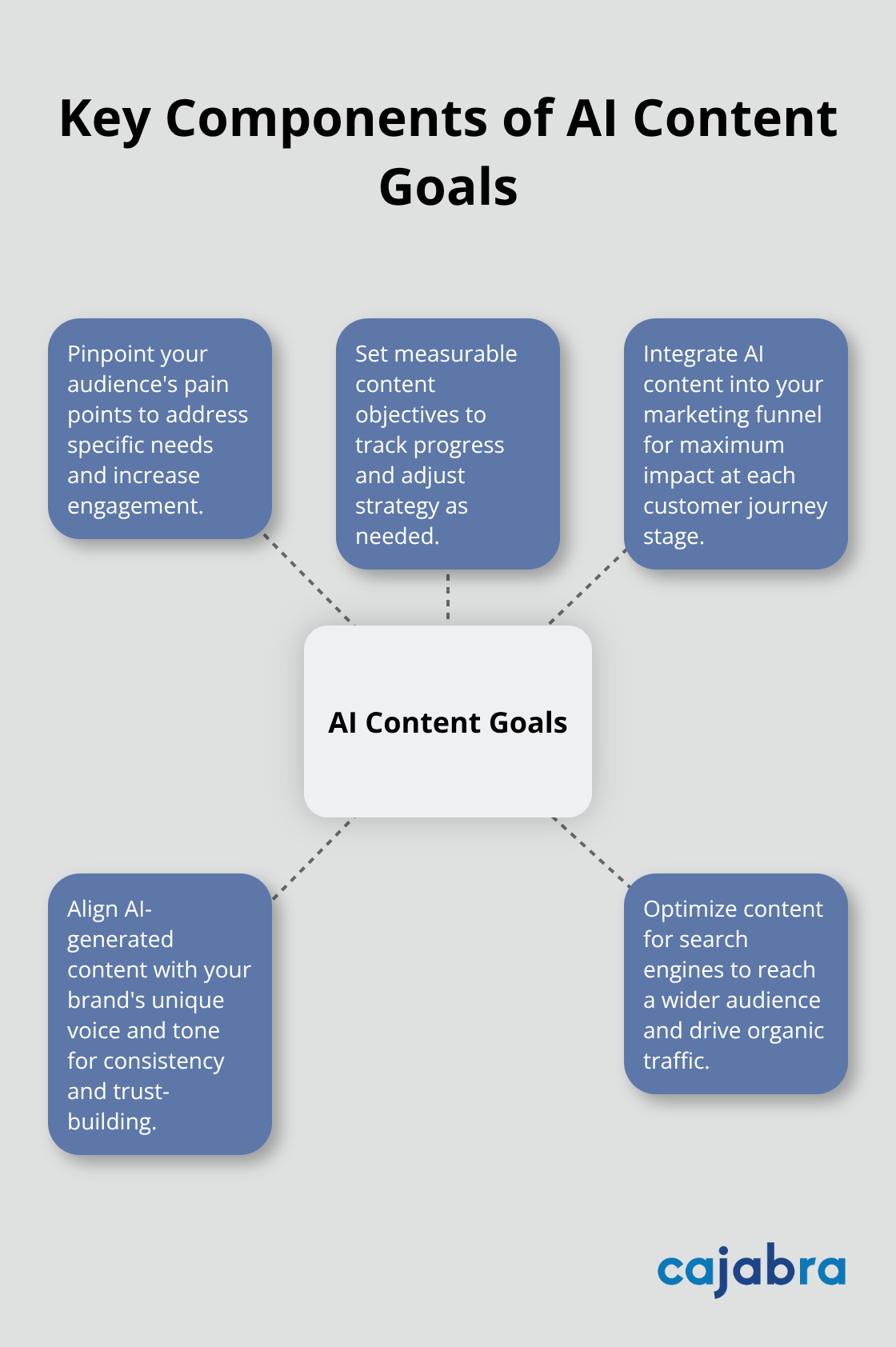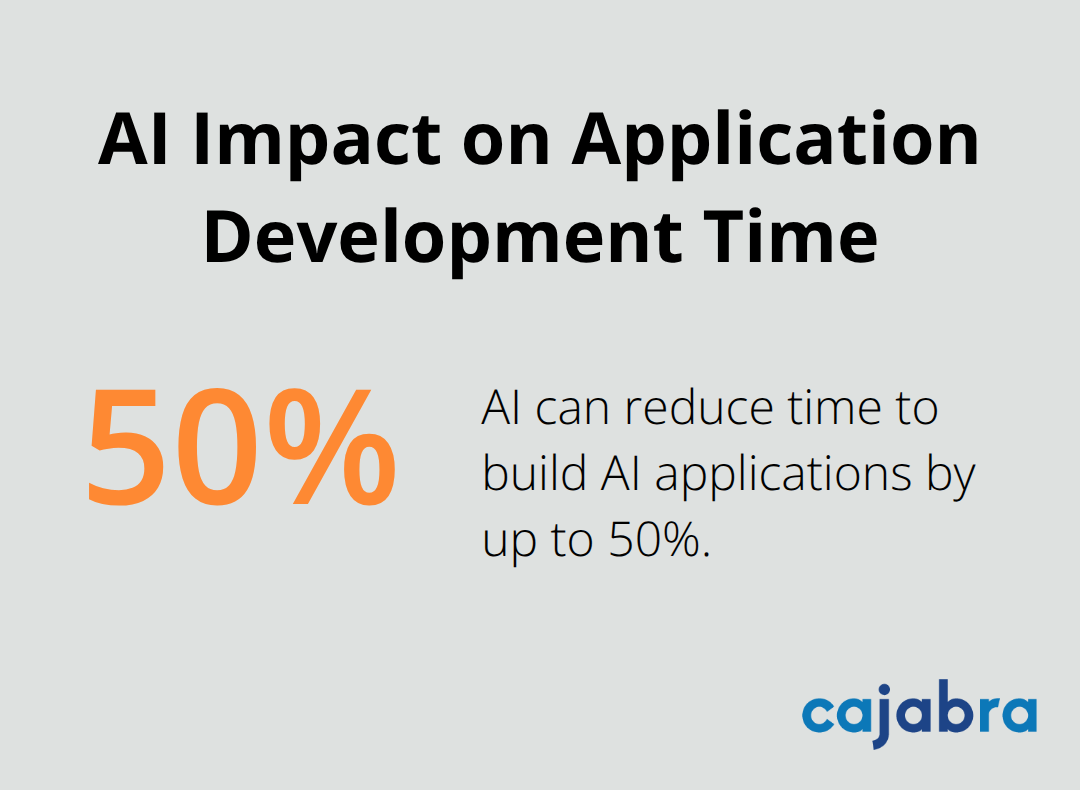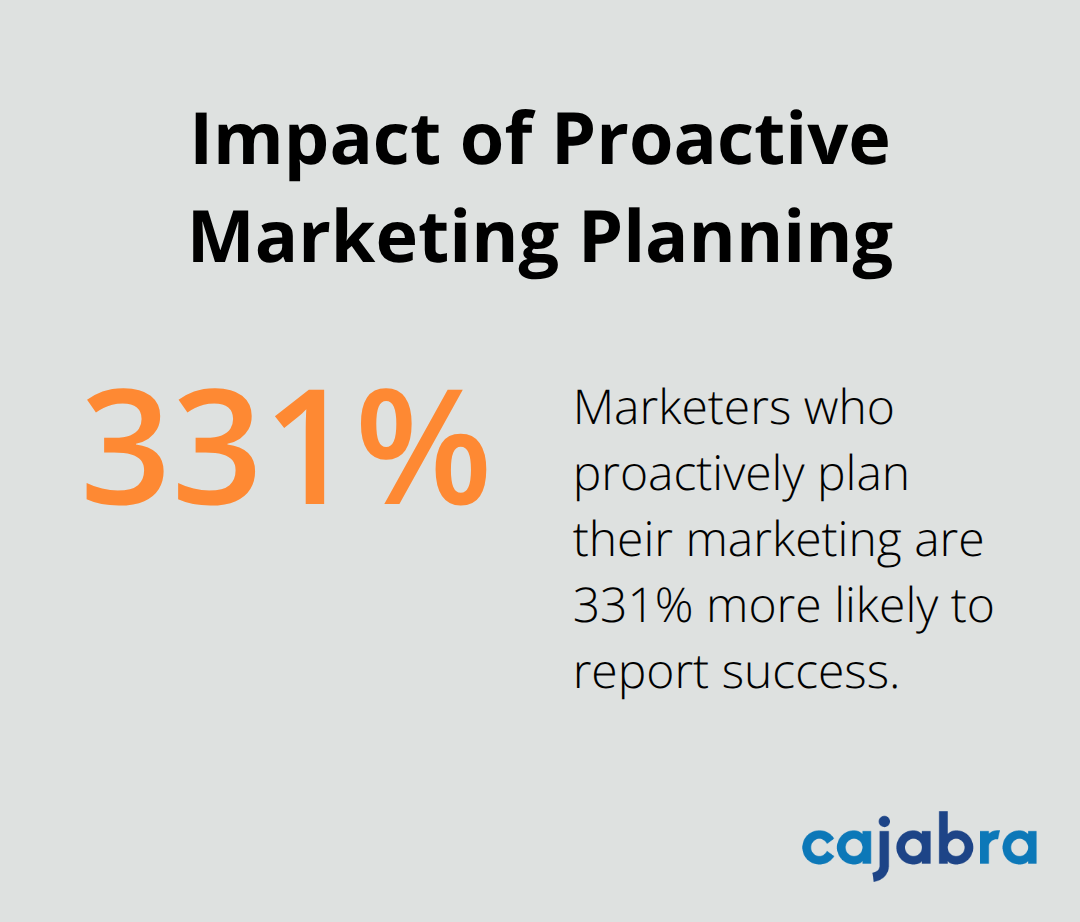
AI content planning is reshaping the digital landscape, offering unprecedented opportunities for businesses to create engaging and targeted content at scale.
At Cajabra, LLC, we've seen firsthand how effective AI content strategies can transform marketing efforts and drive results.
This guide will walk you through the essential steps to plan your AI content effectively, from setting clear goals to implementing robust workflows.
Successful AI content planning starts with a clear understanding of your goals. This foundational step shapes every aspect of your strategy, from tool selection to content creation.
Start by identifying your target audience's needs. AI target audience tools use advanced technology to take out the heavy lifting of reaching your ideal market and increasing revenue. For example, if you're an accounting firm targeting small businesses, you might discover that your audience struggles with cash flow management during tax season. This insight can guide your AI content to address specific pain points, making it more valuable and engaging.
Specific goals lead to specific results. Try to set concrete, measurable objectives for your AI-generated content. For instance, you might aim to become the go-to source in a niche topic or secure the majority of AI citations for a specific topic or industry. These concrete goals will help you track progress and adjust your strategy as needed.
Your AI content shouldn't exist in isolation. It needs to fit seamlessly into your overall marketing strategy. Map out your customer journey and identify where AI-generated content can have the most impact. For example, use AI to create personalized email sequences for nurturing leads or develop a series of blog posts that address common objections in the decision-making phase.
Ensure that your AI-generated content aligns with your brand's unique voice and tone. This consistency (across all marketing channels) helps build trust and recognition with your audience. Provide clear guidelines and examples to your AI tools to maintain this consistency.

While creating content for your audience is paramount, don't forget about search engines. Use AI tools to conduct keyword research and optimize your content for SEO. This approach will help your content reach a wider audience and drive organic traffic to your site.
Now that you've established clear goals for your AI content strategy, it's time to explore the tools that will help you achieve these objectives. Let's move on to choosing the right AI platforms for your content creation needs.
Before you explore AI tools, identify your specific content needs. Do you require assistance with blog posts, social media content, or email campaigns? Some tools excel in particular areas. Jasper.AI offers versatility for various content types, while Copysmith focuses on e-commerce copy. Select tools that align with your content objectives.
The ideal AI tool fits seamlessly into your existing workflow. Look for platforms that integrate with your current content management system, SEO tools, and analytics software. For example, if you use WordPress, consider AI tools like Frase or MarketMuse (which offer direct WordPress integration). This compatibility can reduce manual work and streamline your content production process.
AI tools aren't universal solutions. The ability to customize outputs and train the AI on your brand voice proves invaluable. GPT-3 based platforms offer high levels of customization but may require more setup time. Specialized tools like Phrasee for email subject lines might provide quicker results for specific tasks. Balance the trade-offs between customization and ease of use based on your team's technical expertise.
For accounting firms seeking AI-powered marketing services, Cajabra, LLC offers the JAB System™. This system transforms how accountants approach their marketing, aiming to move them from overlooked to overbooked in just 90 days. While other AI tools offer general content creation, our system addresses the unique challenges and opportunities in the accounting industry.
Try a trial period to test the tool's effectiveness for your specific needs. Monitor key metrics like content quality, production time, and engagement rates to ensure the AI tool delivers real value to your content strategy. (This approach helps you make data-driven decisions about which tools to incorporate long-term.)
Now that you've selected the right AI tools for your content strategy, it's time to develop a robust workflow that maximizes their potential. Let's explore how to create an efficient content creation process that leverages AI while maintaining quality and brand consistency.
Start by outlining your content creation process from idea generation to publication. Identify the stages where AI can provide the most value. For example, use AI for initial topic research and outline creation. This approach can reduce time to build AI applications by up to 50%.

Establish clear guidelines for AI usage. Determine which tasks suit AI and which require human expertise. AI excels at generating data-driven content and initial drafts, while humans add nuance and emotional appeal.
Designate specific roles within your team to manage different aspects of the AI content workflow. Appoint an AI prompt engineer to craft effective prompts and refine AI outputs. Select content editors to review and enhance AI-generated drafts, ensuring alignment with your brand voice and quality standards.
Create a content calendar that outlines topics, deadlines, and responsible team members. Tools like Trello or Asana can help manage this process effectively. A study revealed that marketers who proactively plan their marketing are 331% more likely to report success than their peers.

Establish a multi-step review process to maintain content quality. Begin with an initial AI-generated draft, followed by human editing for accuracy, tone, and brand alignment. Use plagiarism detection tools to ensure originality, as AI can sometimes produce content similar to its training data.
Implement a scoring system for AI-generated content. Rate outputs based on relevance, accuracy, and engagement potential. This approach helps refine your AI prompts over time and improves overall content quality.
Set up a streamlined approval process to avoid bottlenecks. Use collaboration tools like Google Docs or Notion for real-time editing and feedback. Configure automated notifications to alert team members when content is ready for review or approval.
Establish clear criteria for content approval, including SEO requirements, brand guidelines, and factual accuracy. This clarity speeds up the review process and ensures consistency across all content pieces.
Monitor the performance of your AI content workflow regularly. Track metrics such as content production speed, quality scores, and engagement rates. Use these insights to identify areas for improvement and optimize your process.
Try to foster a culture of continuous learning within your team. Encourage team members to share insights and best practices for working with AI tools. This collaborative approach will help you stay at the forefront of AI content creation techniques and create an effective strategy that resonates with your target audience and delivers measurable results.
AI content planning transforms marketing strategies for businesses. It enhances human creativity rather than replaces it, striking a balance between AI-generated content and human oversight. AI handles data analysis and initial drafts, while humans add nuance and brand authenticity. (This combination leads to more engaging and impactful content.)
The field of AI evolves rapidly, with new tools and techniques emerging regularly. Continuous learning and adaptation prove essential for success in AI content planning. Experimentation, result monitoring, and strategy adjustments based on performance data and audience feedback drive improvement.
At Cajabra, LLC, we offer the JAB System™ for accounting firms to leverage AI-powered marketing strategies. This system helps accountants transform their online presence and secure retainer-based clients. AI content planning becomes a powerful asset in your marketing arsenal when you keep your audience's needs at the forefront.



